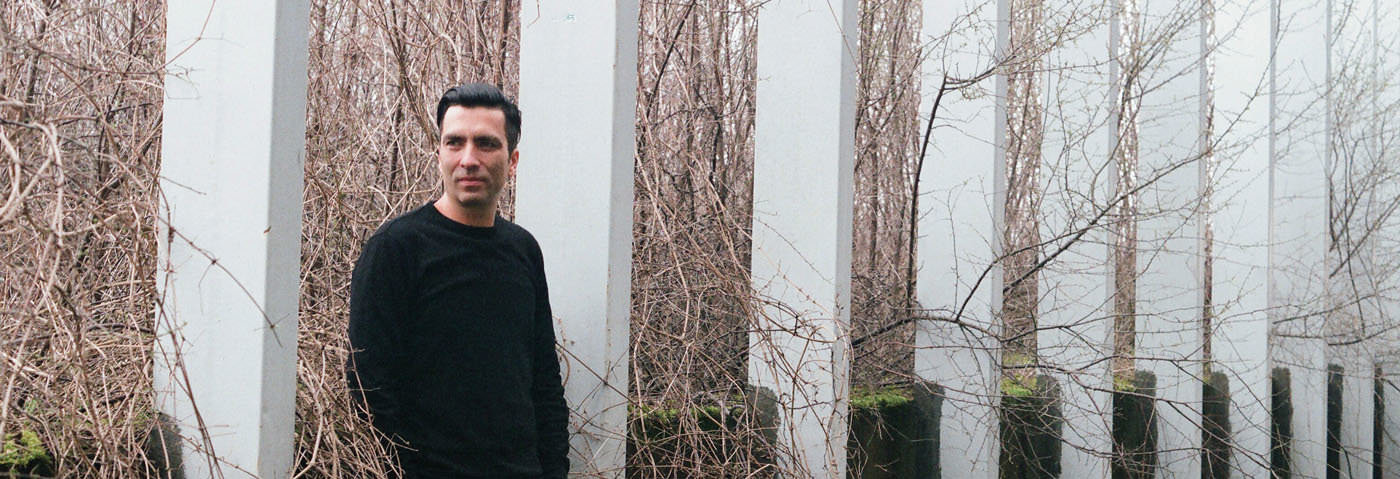Petar Dundov breaks down the creation of his new full-length release.
With a career stretching all the way back to the early 90s, Croatian Petar Dundov is one of the most well-established and most consistent producers in techno. With his new album, At The Turn Of Equilibrium
, out now via long-term collaborators Music Man, we asked him to talk us through its creation, giving us some photos of his incredible studio and sharing some production tips along the way.
Then life
I wanted to do an opening track that could set a mood for the rest of the music that will follow. The idea was to create a beatless composition, introducing different sounds and textures that will appear in the songs afterwards, to serve as a kind of announcement. While browsing on my hard disks I found this nice melody that I made couple of years ago while messing around with Nodal generative music software and used it as a backbone for the rest of composition.
The track opens with the Roland JX8P’s floating chords, followed up by the System 100’s melody surrounded by Juno-106 strings. I just love how the chorus works on the Juno – it feels like it’s hugging all the sounds together. In the middle part, the song drops into a piano solo that I recorded with Logic’s EXS Steinway Grand piano accompanied with a JD990 oboe pad serving as a kind of counterpoint. The whole piece is underpinned with a deep Moog Minitaur bass that slowly drifts between two main keys. This up and down motion is also reflected in the structure of the arrangement, moving from fast to slow and back. The song ends unresolved with an SH-101 solo, leaving the listener with an expectation as to what will follow next.
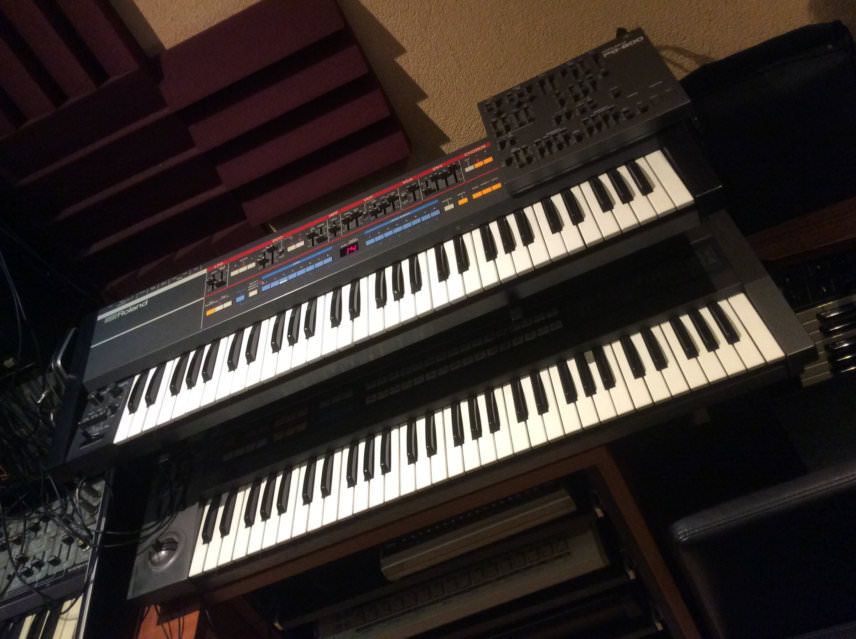
Roland Juno-106 and JX-8P
The Lattice
I have a small setup at home where I can practise. During one session, an idea for ‘Lattice’ came into existence. I had a sequencer running broken chords that I could transpose with my left hand and another one running gate pulses which I used to trigger a synthesiser while manipulating pitch with my right hand. I played a simple downward chord progression while experimenting with different rising and falling melodic patterns. This phenomenon – where harmony is reinforcing melody and vice versa – gave me the idea for the song title.
When I went back to my studio I continued to work on the arrangement, adding drums and supporting string layers. I went for simple 909 and CR-78 drums with a dominating phased shaker cutting out of the mix. I deliberately kept percussion sounds hard panned left and right, out of middle range as much as possible, to leave more space for sounds – especially the Juno-106 string section that appears in the last third of the track.
Before it all ends
I remember coming back home from Ibiza after playing in DC-10 and had this groove locked in my head. The next day I wrote it down using the System 100 for heavy bass and dropping a couple of Motown drum loops on top. I saved it on my disk but as I was working on other project at the time so somehow I forgot about it.
One night at home when everybody was asleep I was playing around with a new Yamaha P10 piano that we bought for my daughter. I was enjoying it so much that I plugged in my MIDI recorder and recorded a couple of nice takes. Back in the studio, I found that forgotten groove and it fitted perfectly with the takes I brought from home.
As the song gradually evolved as an idea, it came to have a Carpenter-style breakdown with an epic synth line. For this kind of occasion I always go for the Prophet-600. To add dimension, I recorded couple of takes in different octaves, mixing them down in hard left and right pan positions. In situations like this I prefer this technique over chorus since the P600 is always slightly detuned, so you can never get two identical takes and the result is a huge stereo width of sound.
For FX sweeps I used a System 100 oscillator in combination with noise generator, and just recorded a bunch of takes while tweaking pitch frequency and filter. I tried the track in a club a couple of times as an ending track and it really gets people’s attention, especially when the main theme hits in the breakdown.
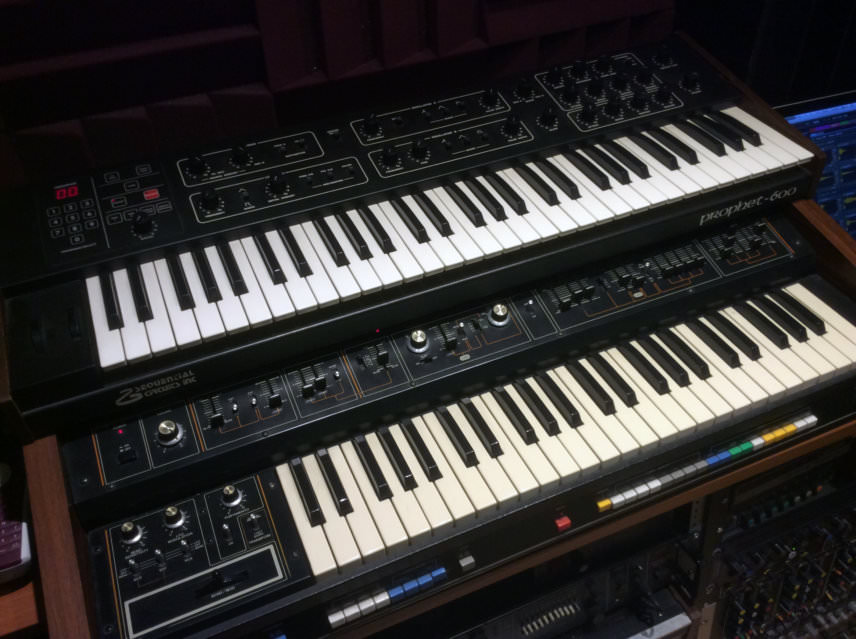
DSI Prophet-600 and Roland Jupiter-4
Midnight orchestra
While experimenting with chords, I noticed a really nice and somewhat unusual feel when transposing all notes from the chord one half step down. It is a quite big jump if you look at it in a circle of fifths, but still I found this nice chord progression that follows this half step rule and could also resolve from major to minor chords in the same key.
I plugged in some synths and played around, and after while had a really nice theme that worked in this harmony. I decided to go with a simple, dry-sounding mix of elements to get more emphasis on tones that are interacting. I tried to fill space with as many synths as the mix could hold – this is by far the most simultaneous synths I’ve ever used in one track, a real constellation of sounds scattered around in the sonic field. As a contrast, in the middle of the song everything drops to a Moog Minitaur bass arpeggio with the main synth on top in an almost random pattern, helping release some of the memorised notes from first half of the track. This unloading is crucial for the listener to be able to stay focused on the parts that will follow.
When the main theme returns and all the elements are introduced again, I topped up everything with Yamaha TG77 Stabs. I really love this synth – it’s one of my FM favorites, always able to cut right through very busy mixes. This track is made as a kind of homage to Kraftwerk, my childhood heroes.
Mist
When I was in Tokyo last time, coping with jet lag, one early morning I visited Yoyogi park to calm myself down and just sat on a bench and listened to crickets. After an hour I was so calm that I could hear my heart pumping really loudly and as I picked up the sound, in my mind, this pounding beat started to appear. I wrote the pattern down, then when I came back home I was teleported back to that bench just by remembering that beat.
The next day I was in my studio and started painting a sonic picture of that experience. For the crickets I used Logic’s EFM1 synth, serving as a dominating rhythmic element, constantly modulating, turning from noise to sound. For the main theme I went for Logic’s Retro Synth in wavetable mode – sonically it is an almost perfect replica of the legendary PPG Wave.
The talking drum percussions are done with Stylus RMX and for pattern manipulation I used the built-in chaos designer. The fantastic thing is that you can map a MIDI controller to practically any parameter and create very realistic drum pattern variations that sound like you have a real percussionist under the hood. The whole track is heavily squashed with SSL’s G bus compressor to create a breathing effect around the main bass pattern, a key element in which the whole song is rooted.
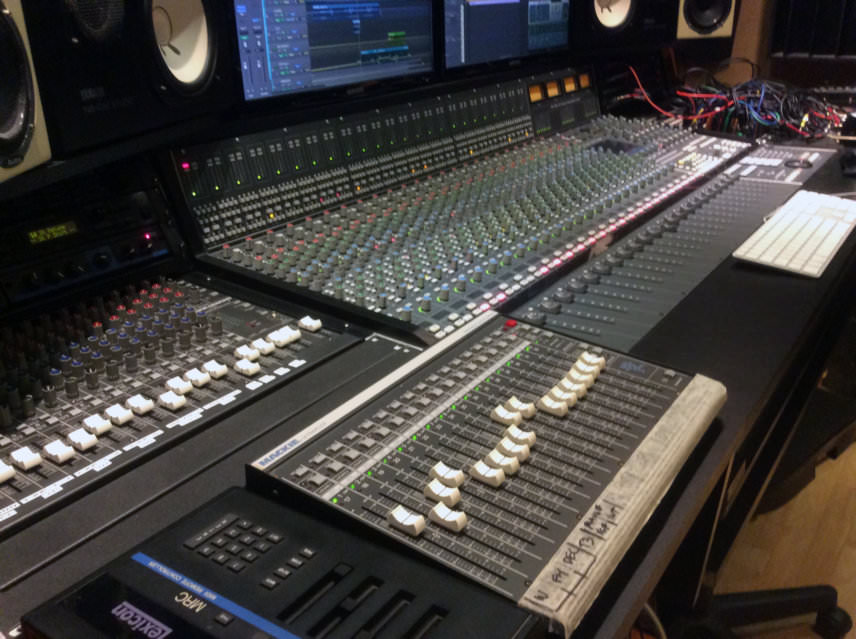
SSL AWS console
New Hope
This is the first song I wrote for this album. I was thinking about a new direction where I could go with the sound and rhythm. At the time, I stumbled upon this paper from Godfried Toussaint describing how to use Euclidean algorithm to generate music rhythms. I was particularly attracted to West African and Arab beats usually played in 6/4 measure – something in this relation sounded really familiar to me, so I did a session firing my Model 104 sequencer to distribute four bass pulses over six quarter beats and adding Jupiter-4 filtered chords on top, creating a kind of guitar strum pattern.
To add an organic touch I cross-wired my two Roland Space Echoes and hard panned them to the left and right, making a wide stereo pitch-modulated ping-pong delay. These machines are just brilliant – they can turn any sound into something wonderful.
Once I had a nice atmosphere going on, I powered up my Matrix 6 and did a session recording with different solo approaches. After some 15 minutes I had all the ingredients for a song and spent the rest of the time working on the arrangement and mixdown.
Missing you
The idea for this song came up after leaving home for a couple of weeks because of my tour schedule. It describes a conversation between man and woman, waking up in bed early in the morning, both confronted with feelings of separation and uncertainty. By trying to adapt this story to music I used two lead sounds, one in steady repetitive motion defining a main melodic pattern and the other that is appearing and disappearing – at the same time, when playing together, they both create an interplay in harmony.
This song was challenging to get right since there are many layers that are playing together. After a couple of pilot mixes, I realised that this interaction must be played in one take with the ability to switch between different chord groups, so I ordered a foot controller with octave keys, to be able to use my feet along with my hands. For the two leads I used DSI Tetra and the Roland System 100. Tetra is such a powerful synthesiser – I use it extensively in my live shows and spent a lot of time with it. It is one of the recent new synths that can stand side by side with big boys like Prophet or Moog. For drums I used the LinnDrum to get classic 80s feel – it just fits right for this song. For the string section I went for Logic’s EXS sampler again, creating a pretty realistic string quartet.
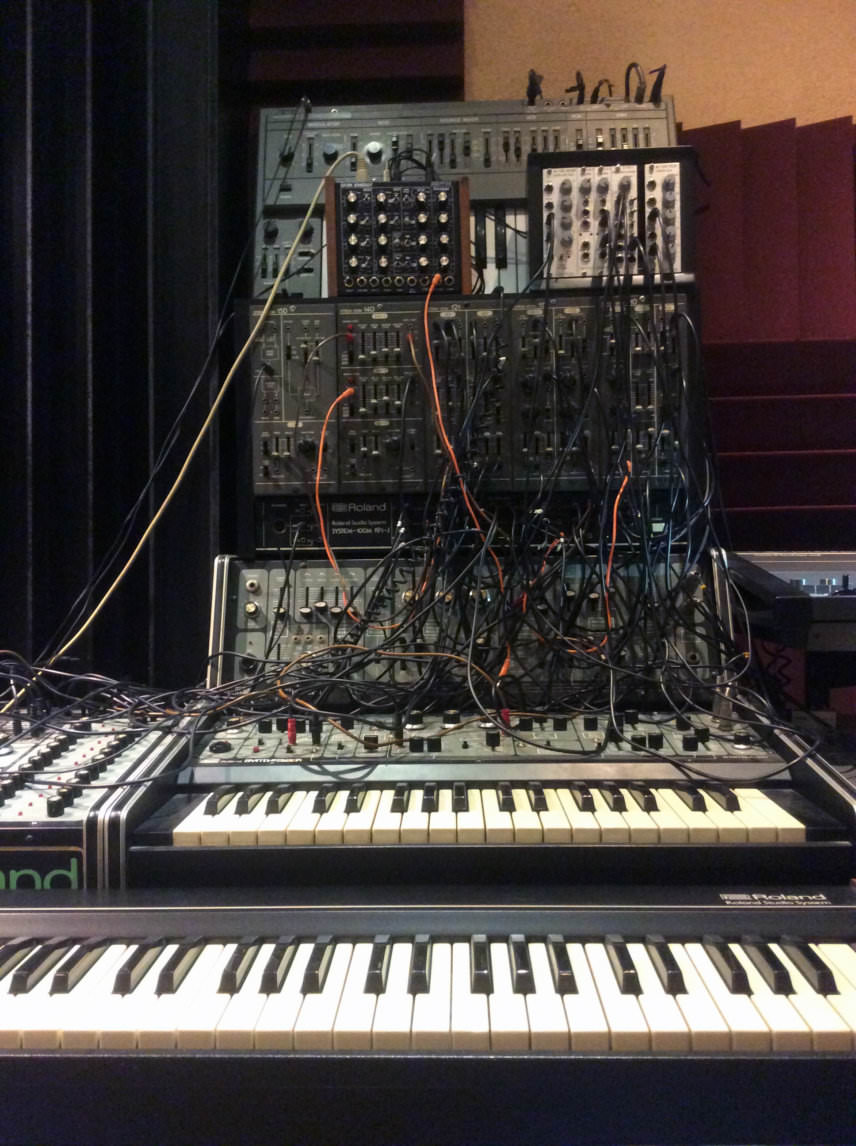
Roland System 100 and SH-101
Everlasting love
Inspiration for this track originally came from a book by Douglas R Hofstadter, Gödel, Escher, Bach. While trying to write a love song for the album ending, I remembered a part of the book where it touches on Bach’s endlessly rising canon from Musical Offering. I thought what would be a better way to describe love than as an eternally rising emotion. With a bit of fiddling around with my keyboard and sequencer I was able to create a nice progression rooted in a slowly filtered MFB-Synth Lite bass with System 100 lead on top playing the melodic part. The string section is done with two octave-layered TG77 takes. In the middle of the song I used DSI Tetra, slowly rising and falling trough the scale, bouncing in a long tape delay. For occasional stereo widening effect I used Waves Reel ADT, a great plugin – I use it a lot to add a bit of side motion. The whole mix was glued with Dangerous Compressor – it’s a fantastic tool when you want to add density to a mix while keeping transients untouched.
At The Turn Of Equilibrium
is out now on Music Man Belgium. Find Petar on Facebook, Twitter and SoundCloud.
